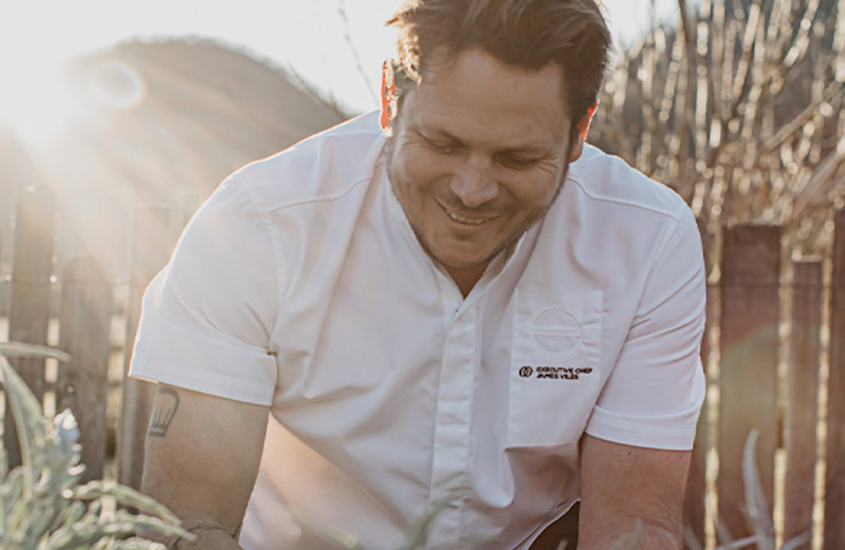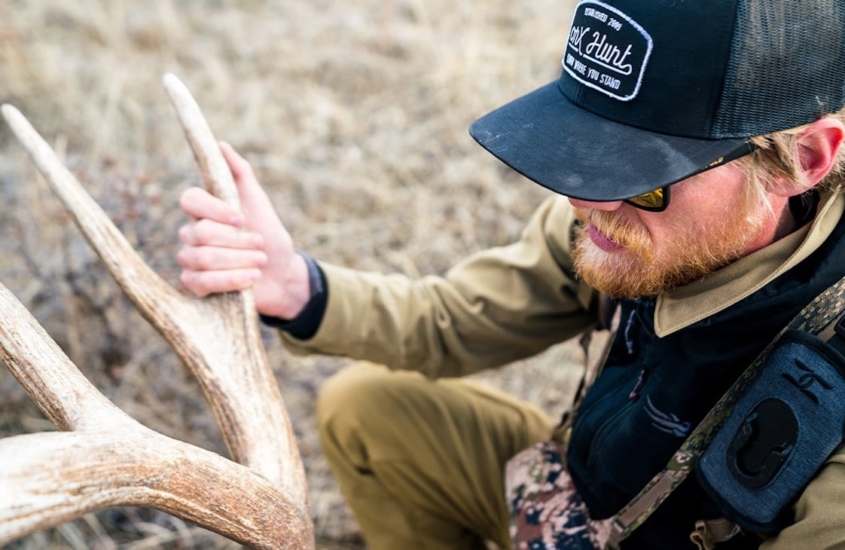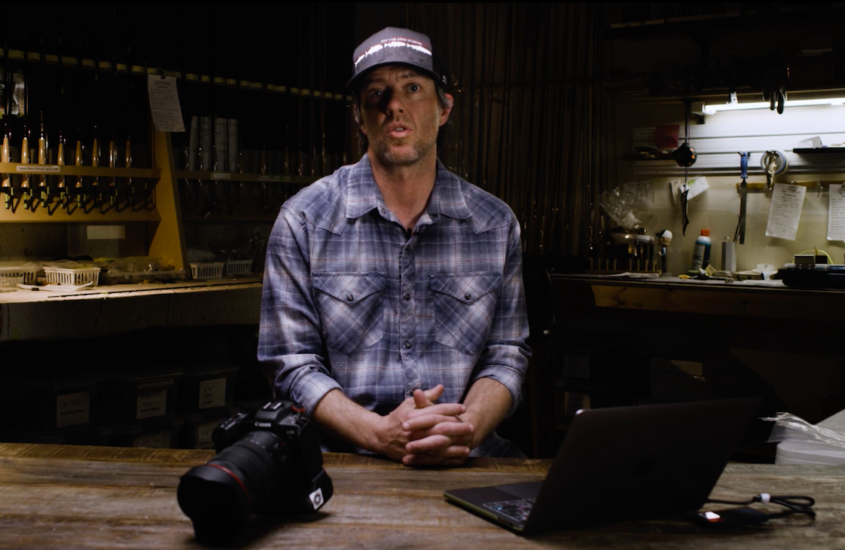“I’m going to die.” That’s all I can think as my forearm crashes through the alders in front of me while straddling another downed tree. My left leg scrapes across the tree and plants firmly on the mountainside.
This is the hardest hunt of my life. I’m soaked with sweat, and blood, thanks to the constant scraping of branches. My husband and I left our Chevy Silverado less than an hour ago. We’ve only made it a quarter-mile up the mountain but I look like I’ve been struggling to survive in the Alaska wilderness for weeks.
My husband leads the way. Every step takes maximum effort. A wildfire left a mess of downed trees mixed with massive new growth. This hike isn’t your routine one foot in front of the other. It’s more like straddle, crawl, step, crash, repeat, all with 40-pounds of hunting gear on your back.
I look down. Crap. I’ve stepped in a pile of bear crap that’s fresh and full of berries. And this isn’t the first pile.
“It’s brown bear city in here,” my husband whispers.
Thick forest makes it impossible to see more than a few yards. A bear could be on us in seconds. But navigating this mess is loud, so at least it should hear us—hopefully it’s also hoping to avoid an encounter.
We won’t break tree line for several miles. Plowing through this wilderness one would never guess that below us runs Alaska’s popular Seward Highway. But we’re more interested in what’s above, mountain goats. A mountain goat tag is buried in my pack. It’s a tough tag to draw but so far, an even tougher hunt to undertake.
We continue our climb, occasionally catching a glimpse of the peak. Several hours and miles in we make our way out of the deadfall and into waist-high grass, alders and impossible inclines.
I’m beginning to feel like the worst is almost over when suddenly I’m on fire. I don’t know why but my entire body is engulfed in white, hot pain. Then I hear it, loud buzzing.
I look down. Instead of camo covered arms and legs, I see yellow and black. Hundreds of wriggling, stinging yellow jackets. The shock of the situation sets in.
“Get them off of me.” “Make it stop,” I scream.
I spot the crushed nest under my boot. The grass was too high and thick to notice until we were on top of it. I need to run but suddenly the weight of my pack is impossible to carry. I stumble a few steps before collapsing. I only hear the buzzing of the yellow jackets and feel the fire of their sting. I can’t escape, all I can do is lay beneath the swarm, screaming, crying for help.
“Dump your pack and run,” my husband yells as he runs at me. But I’m frozen by the flames of pain. My husband begins to beat the yellow jackets off my face with his hat. The buzzing begins to soften and is replaced by a ringing. The fire fades and in it’s place, calm confusion.
“Take off your pack, let’s climb up to that clearing,” my husband says frantically.
I can’t move. “My feet itch, I just want to scratch my feet,” I cry.
He unclips my backpack, pulls me up and we stumble to the opening. I’m suddenly aware that I can barely breathe. I’m hyperventilating. I feel my airway closing. My chest heaves in and out at a rapid pace. I can’t get a full breath. My lips, eyes and tongue are swollen. My body is experiencing anaphylaxis shock, a severe allergic reaction, from the poison of the stings.
My husband grabs the first aid kit. It holds the basics like gauze, bandages, pain pills, super glue and more, but we never thought about an antihistamine. We didn’t think there was anything we were allergic to in the area. He hands me ibuprofen, hoping something is better than nothing and within a few minutes breathing gets a little easier.
We always carry an inReach, a satellite communication device. My husband tells me he wants to activate the SOS button to our GPS coordinates to emergency responders. I beg him to wait, telling him I can hike out. The reality is even if I can’t, it will take hours for someone to get to us, even though we’re just a few miles off the highway.
We leave our packs on the mountain. Thousands of dollars in a tent, rifle, clothing, binoculars, spotting scope, sleeping bags and more. We mark the location with the GPS and hang two game bags.
I didn’t think anything could be worse than the climb up, I’m wrong. We race down the mountain. Exhaustion, confusion and pulsating, itching stings that are being torn open by the thick forest now replace the pain that engulfed my body.
Every time I lay down in the wet grass my husband threatens to call for a rescue and I get back up. “I’m going to die. I want to die,” I think to myself with every step. My mind drifts back to the brown bear scat from the way up. But this time instead of fear, I pray for a bear to come end my pain.
But death doesn’t come. I push through the poison and make it to the truck. On the hour-long ride to the hospital the itching beneath my merino wool becomes too much. I strip down to find a wave of hives traveling my body. The red, raised bumps move from my stomach to my chest and down my arm.
At the Soldotna Emergency Room I’m given an IV of antihistamine to treat the allergic reaction I’m having to the amount of poison the yellow jackets injected into my system. Within minutes the swelling subsides and color returns to my skin. It’s amazing how fast I look like myself again, with the exception of red swollen stings everywhere.
Of all the hunts I’ve done in bear country, I never thought it would be a wasp attack, so close to home, to almost kill me. The encounter taught me the importance of always carrying the right survival equipment when you’re in the backcountry. I was back on that mountain a month later, but this time with an EpiPen and pack of Benadryl.
Hunters and anglers are always trying to balance weight vs. risk with backcountry kits but here are a few of the basics to bring:
- Adhesive bandages
- Antibiotic cream
- Alcohol and antiseptic wipes
- Antihistamine (Benadryl)
- Aspirin
- Blister treatment (Moleskin)
- Butterfly bandages
- Diarrhea medicine
- Duct tape
- EpiPen
- Gauze
- Ibuprofen (and other pain-relief medicine)
- Knife
- Lighter
- Liquid stiches
- Nitrile gloves
- Oral rehydration salts
- Satellite communication device
- Throat lozenges
- Triangular bandage
- Water treatment tabs
Stay tuned for my next article “Packing a Proper First Aid Kit” where we’ll take a more in-depth look at what to include in a first aid kit, as well storage tips and more.













